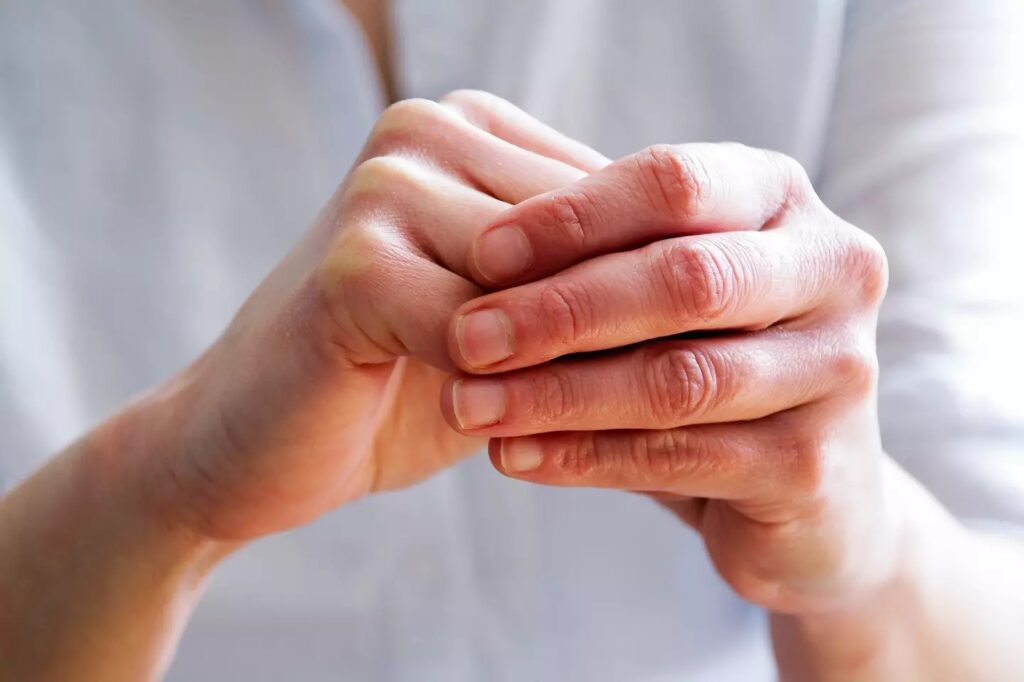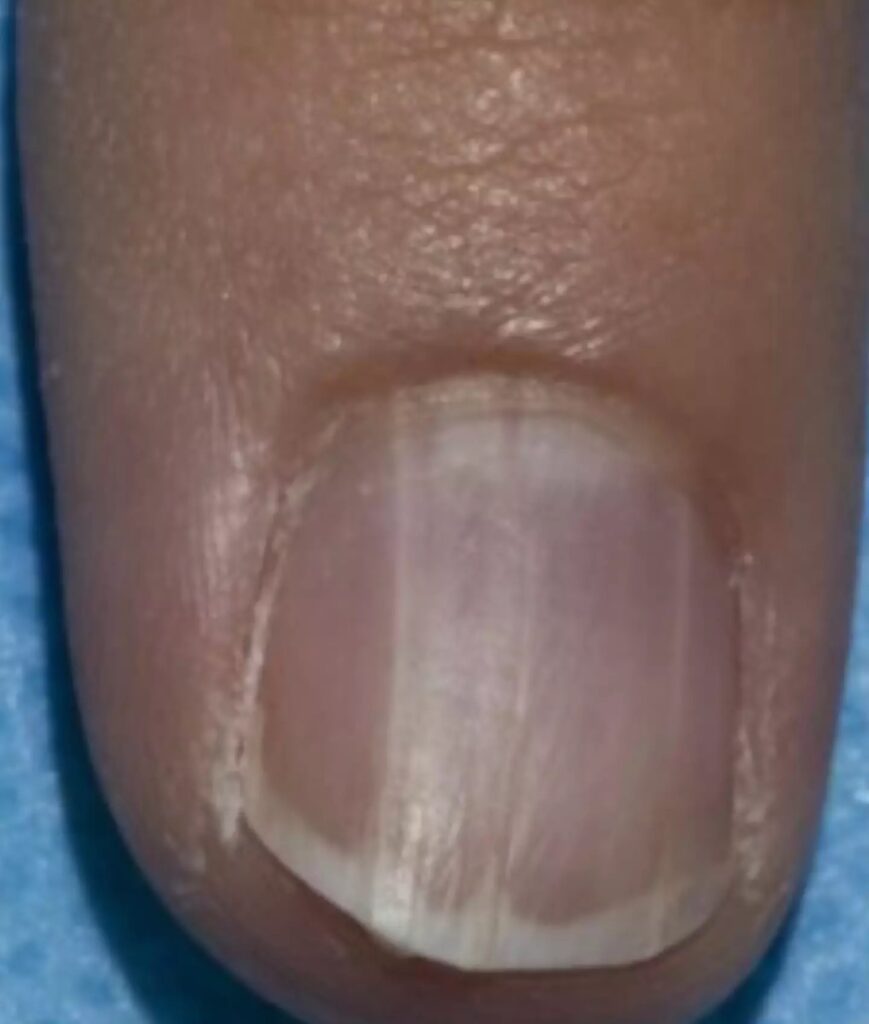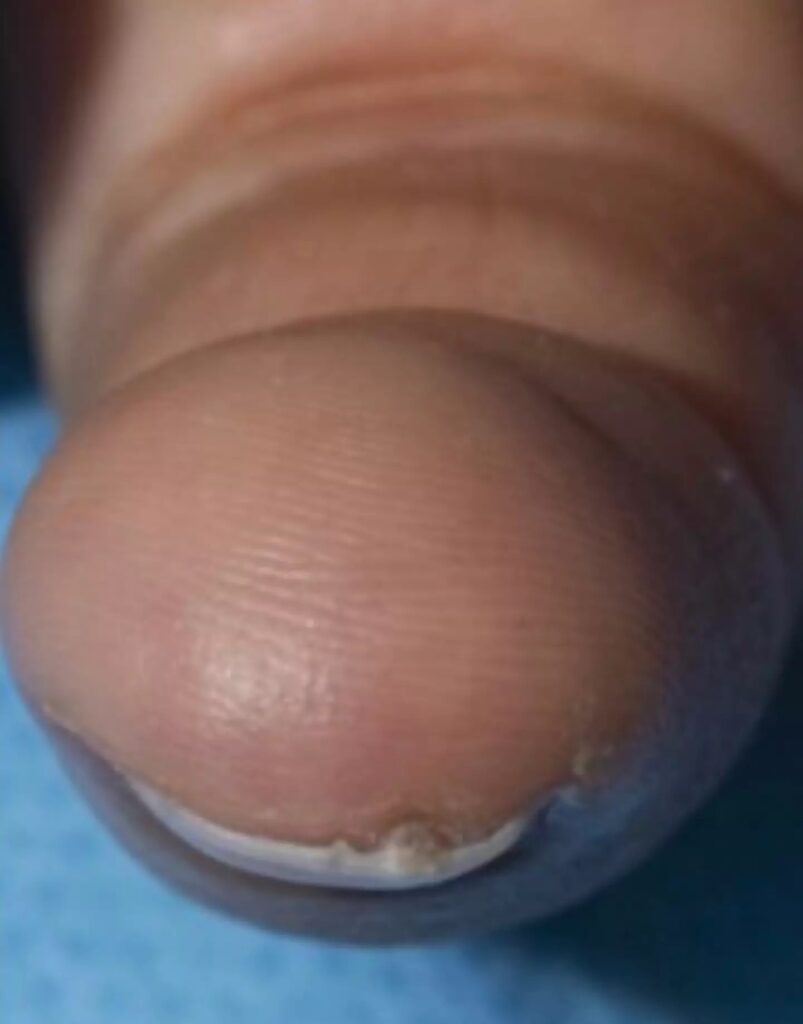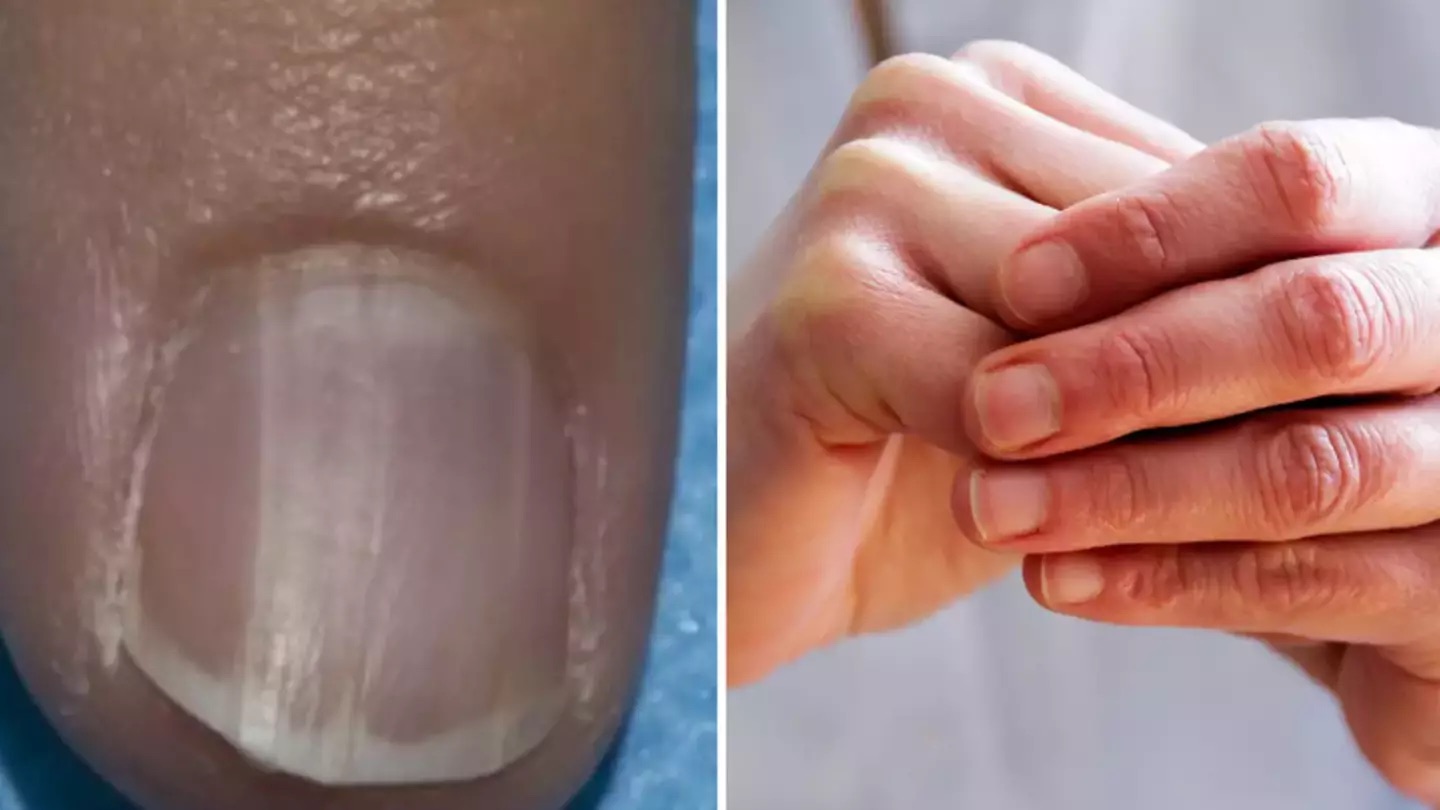Health professionals have raised concerns about specific nail abnormalities that may indicate cancer. A recent study by researchers at the National Institutes of Health (NIH) has identified a usually harmless nail condition that could point to a rare genetic syndrome.
This syndrome, known as BAP1 tumor predisposition syndrome, increases the risk of developing various cancers, including those affecting the skin, eyes, kidneys, and the lining of the chest and abdomen.

The study examined 47 patients with BAP1 tumor predisposition syndrome from 35 different families. Co-lead researcher and genetic counselor Alexandra Lebensohn noted: “A particularly observant patient pointed out minor changes in his nails during an initial genetic evaluation.”
This observation prompted the researchers to check other patients for similar nail changes, leading to this new finding. The team conducted biopsies of the nails and nail beds on several individuals, confirming their hypothesis of a benign growth called onychopapilloma.

The syndrome is marked by a distinct streak, usually white or red, running along the nail. This discoloration is often accompanied by nail thickening beneath and at the tip. Among study participants with BAP1 tumor predisposition syndrome aged 30 or older, 88% had onychopapilloma tumors in multiple nails.
Based on these findings, researchers stress the importance of nail examinations, especially for those with a family history of melanoma. The World Health Organization underscores that melanoma is a serious type of skin cancer that can be life-threatening if not detected early.

While changes in moles or skin lesions are commonly associated with melanoma, there are many subtler signs people should be aware of. Early detection of these signs is crucial for timely diagnosis and treatment.
Edward Cowen, director of Dermatology Consultation Services at NIH, stated: “This specific finding is rare in the general population, and we recommend that the presence of nail changes indicative of onychopapillomas on multiple nails should prompt consideration for a diagnosis of BAP1 tumour predisposition syndrome.”
This condition results from mutations in the BAP1 gene, which normally acts as a tumor suppressor, among other functions.
Raffit Hassan, co-senior author of the study, remarked: “This discovery highlights how interdisciplinary collaboration and long-term studies can illuminate rare diseases.”
